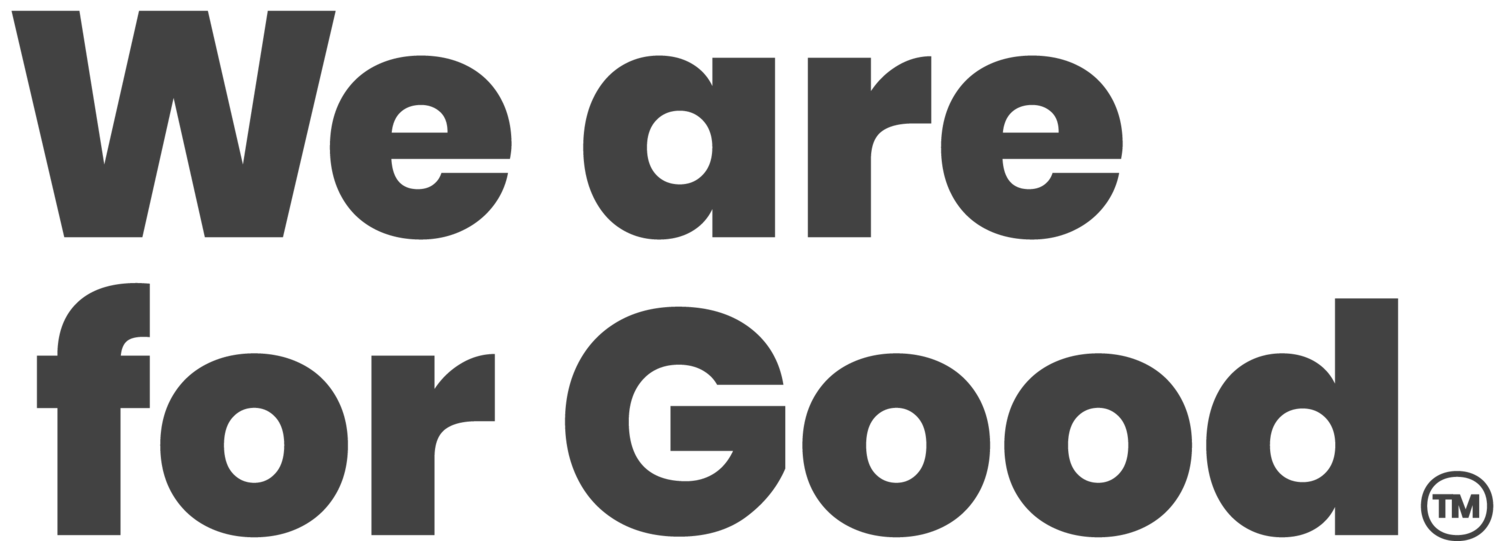4 Nonprofit Fundraising Strategies to Maximize Donations - Craig Grella
As a nonprofit professional, you know how difficult earning donations can be. From marketing costs to setting up your donation page and organizing fundraisers, attracting supporters is resource-intensive. Sometimes, a donation may not even recoup the cost of obtaining it! This is why maximizing each donation’s value should be one of your nonprofit’s top priorities.
Different supporters have different interest levels and capacities to give. Your fundraising strategy should take these factors into account and consider how to create opportunities where all donations can provide more value. Of course, this is easier said than done, and many nonprofits may feel they’re already doing everything they can to maximize their donations.
To help your nonprofit take a deeper look at your donation process and leverage more effective fundraising strategies, this article will explore four techniques for earning more from each donation:
Make donating easy.
Host a peer-to-peer fundraiser.
Build donor relationships.
Leverage matching gifts.
When implementing these best practices, be sure to keep your nonprofit’s main performance metrics in mind. This will help you focus your efforts as you maximize specific types of donations’ value. After all, some nonprofit organizations may be able to take a widespread approach right out of the gate, while those with fewer resources can benefit from dedicating their time and effort to one or two approaches and expanding later.
1. Make donating easy.
Getting supporters to your donation page often requires creating multiple touchpoints across several communication channels. When supporters finally do reach your website, what they find should make donating as easy as possible.
You can improve your supporters’ digital giving experience and increase the chance that they’ll give with the following best practices:
Brand your donation forms. Unfortunately, not every website posing as a nonprofit is legitimate, and donors are wary about giving their sensitive financial information out online. The last thing they want is to give their hard-earned money to organizations that might be scams. You can reassure your supporters and make them feel safe to give by branding your donation form with your nonprofit’s logo and even adding details about your mission, a donation’s impact, and more. Also, avoid sending them to a third-party donation platform and instead embed your form into your website to deepen their trust even more.
Ensure your donation form is accessible. The last thing you want is to exclude anyone from being able to donate. Open up donating to everyone regardless of their location, device, browser, language, or ability by researching accessibility best practices. For example, you can (and should) design your page with larger text and readable buttons to aid those who are using mobile devices or who have poor vision. You’ll also want to maintain a vertical layout so those accessing the page on smaller devices can see everything they need without zooming in and out. Other considerations include using background and text colors that provide a high contrast ratio, and ensuring fields are clearly labeled. The list goes on, so be sure to do your research and design your page with user experience in mind.
Add a prominent donate button. After reaching your homepage, visitors should be able to find your donation page in seconds. Most nonprofits accomplish this by adding a prominent donate button to their navigation bar. That way, it appears on every page of their website. Salsa’s guide to donate buttons offers advice for ensuring your donation button stands out, such as choosing a color that matches your overall color scheme but contrasts with your background. It also offers tips for ensuring your donation button resizes properly for mobile screens.
Allow donors to opt into your recurring gifts program. Once donors reach your donation page, it should also be easy to become a recurring donor. Some donation forms offer an easy checkbox to allow supporters to make their donation a recurring gift, while others provide separate donation options for recurring and one-time gifts that supporters can toggle between.
These tips can be implemented with the right fundraising tools and website design practices. Consider your website and donation form’s layouts and practice going through them as if you were a new donor. Take note of what stands out to you, including both positives that helped you complete the process and potential distractions that might result in donation abandonment.
2. Host a peer-to-peer fundraiser.
When supporters join your cause, many of them bring their personal networks with them. Your nonprofit can access these networks and earn more support with peer-to-peer fundraisers.
Peer-to-peer fundraisers are a shortcut around the usual donor outreach process as your current supporters will already have established relationships with prospective donors who share similar passions. This means your nonprofit can earn more donations at lower marketing investment costs. You can get started with a peer-to-peer fundraiser by doing the following:
Recruit supporters to fundraise. Peer-to-peer fundraisers are an opportunity to develop deeper relationships with your current supporters in addition to acquiring new ones. As mentioned, nonprofits should provide supporters with more ways to get involved than just donating. Inviting supporters to share why your cause matters to them with their friends and family can be an incredibly effective engagement opportunity.
Set up campaign pages for volunteers. Those who give through peer-to-peer campaigns donate based on their personal connections to your volunteer fundraisers. While these donors will be interested in your cause, they’ll be more likely to give if they can donate to a unique campaign page based around their friend or family member, rather than your nonprofit’s general donation page.
Check on volunteers to support their efforts. While your supporters will act relatively independently during your campaign, you should make an effort to stay in regular contact with them. Doing so means you’ll be able to provide help quickly if needed, while also ensuring your volunteers know your organization is there for them, helping to continue building your relationship with them.
No matter what best practices you incorporate, you can set your peer-to-peer campaigns up for success by first ensuring your nonprofit has a strong social media presence. Most peer-to-peer campaigns are spread via sharing on platforms like Facebook, Twitter, and Instagram, and having active social media profiles will allow your volunteers to link back to your nonprofit easily.
More and more nonprofits are recognizing the power of social media in fundraising, and last year, more than 50% of organizations reported that they’re investing more into social media as a way to connect with supporters. Plus, donors introduced to your nonprofit through your peer-to-peer campaign will be more likely to continue learning about your cause if they can stay on the same platform, rather than navigating back to your website.
3. Build donor relationships.
As mentioned, acquiring new donors is difficult and requires high resource investment. By contrast, building relationships and maintaining your current donors is far more cost-effective. Recurring donors are a reliable source of revenue and are likely to give larger gifts the longer they’ve been with your nonprofit.
You can build a base of recurring donors and earn more in the long run by cultivating donor relationships. Strong donor relationships can lead to more gifts, planned gifts, and sometimes major gifts. Even donors who have a limited capacity to give are more likely to earn back the investment you spent attaining them when you build a strong relationship and encourage them to stick around.
Here are a few ways your nonprofit can get started building new relationships and strengthening your current connections with supporters:
Make donor profiles. Whether you have fifty or fifty thousand donors, you can keep all of their information organized with donor profiles in your CRM. Donor profiles are a tool for storing key information about each individual donor, allowing you to create personalized messages and take targeted actions to improve each engagement.
Thank donors quickly and regularly. After a donor gives, thank them as soon as possible! This may sound obvious, but many nonprofits fail to thank donors in a timely manner and lose support as a result. Ensure you have an automatic thank you message in place for donors who give online, and personalize these messages to address each donor by name.
Offer multiple engagement opportunities. If you only ever reach out to supporters to ask for more donations, your supporters may begin to think of your nonprofit as another expense, rather than a cause they care about. Instead, offer your donors a variety of engagement opportunities outside of donating, such as attending events, volunteering, and participating in your advocacy campaigns. Be sure to use your donor management tools to make note of their involvement to help personalize future communication.
As you collect key information about your donors over the course of your relationships, be sure to regularly update and clean your database. As NPOInfo’s article on nonprofit data hygiene points out, poorly managed data can result in numerous problems that can get in the way of maximizing donations, including “ineffective lead tracking, marketing missteps, and the inability to personalize outreach materials to donors and subscribers.”
4. Leverage matching gifts.
To truly make the most of every contribution, make sure you’re leveraging corporate giving opportunities. In particular, your donors can give more without reaching back into their wallets with matching gifts.
Corporate matching gifts are donations employers make when their employees give to charitable causes like your nonprofit. Many matching gift companies offer dollar-per-dollar gifts, but some, including Coca-Cola, Johnson & Johnson, and General Mills, offer up to two-to-one matching ratios.
As matching gifts come from your donors’ employers, these contributions are essentially free money for your nonprofit. Matching gifts are often underutilized as many individuals are unaware if their employer has a matching gift program, let alone if their donation qualifies.
You can help your supporters increase their donations with matching gifts by taking the following steps:
Ask donors for their company’s name during the donation process.
Use a matching gift database to share available matching gift program information from donors’ employers.
Ask donors to complete their employers’ matching gift applications and provide any additional information that might be needed.
Remind donors who don’t complete the matching gift process that they can increase their gift for free by doing so.
As mentioned, matching gift opportunities can be added seamlessly to your donation form, helping donors discover their matching gift eligibility while still creating a short, easy giving process. Ensure that your matching gift tools integrate with your donation management software so you can make note of which donors work for match-eligible employers in their donor profiles.
Craig Grella, Content Marketer, Salsa Labs
Craig Grella, Content Marketer, Salsa Labs
Craig Grella is a Content Marketer at Salsa Labs, the premier software for growth-focused nonprofits that combines CRM and engagement software with embedded best practices, machine learning, and world-class education and support. In his role, he serves thousands of nonprofits and advocacy organizations across the U.S.
Craig focuses on digital strategy using email marketing, online advertising campaigns, SMS campaigns, CRM management, reporting/analytics for KPIs, and more. He’s also the founder of Think Big Campaigns, a full-service consulting firm that specializes in political consulting, digital organizing, and issue advocacy.
Craig Grella, Content Marketer, Salsa Labs
Craig Grella is a Content Marketer at , the premier software for growth-focused nonprofits that combines CRM and engagement software with embedded best practices, machine learning, and world-class education and support. In his role, he serves thousands of nonprofits and advocacy organizations across the U.S.


